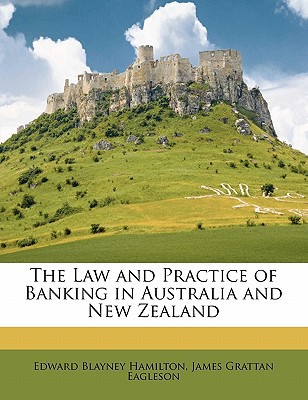

 |

|

The average rating for The Law and Practice of Banking in Australia and New Zealand based on 2 reviews is 3.5 stars.
Review # 1 was written on 2015-10-12 00:00:00 Cathy Thomas Cathy Thomas“And hand in hand, on the edge of the sand, They danced by the light of the moon.” ― Edward Lear, The Owl and the Pussycat The Victorian artist and writer Edward Lear was the twentieth of twenty-one children and he was raised mostly by his sister, Ann, who was twenty-two years older than he. He had epilepsy (which he called “The Demon”) at the age of 6 and was greatly ashamed of his condition. Lear also had what he called ‘the Morbids’, sudden changes of mood with bouts of acute depression. Like many sickly children, he escaped by retreating into a fantasy world and by becoming a loner for the rest of his life. Biographer Lady Susan Chitty wrote about Lear in her book “The Singular Person called Lear: The Extraordinary Life of the Author of the Own and the Pussycat.” The author, the daughter of the notoriously difficult author Antonia White, knows about troubled childhoods and she writes about Edward's childhood with grace and compassion. In 1816, when Lear was about four, his father suffered a sudden financial collapse and served a short prison sentence for fraud and debt. His mother gave him to her oldest daughter to raise and never had anything more to do with him. Lear saw himself as an oddity and a social outcast. Early on he showed artistic talent and began his career at fourteen, drawing flowers, butterflies, and birds, especially parrots. Although Lear first published his limericks in “ A Book of Nonsense" in 1846, he had begun writing them a decade earlier at the Earl of Derby's Knowsley Hall, where he had gone to draw Lord Stanley's private menagerie. One hundred and twenty-eight limericks survive in the Knowsley Album of about 1837. When his eyesight deteriorated too much to work with such precision on the fine drawings and etchings of plates used in lithography, he turned to landscape painting and travel. His traveling was non-stop for the rest of his life due to the fact that being on the move helped reduce his “fits” and although he was exhausted, he felt better when he traveled. In 1846 Lear published ” A Book of Nonsense.” It was a volume of limericks which went through three editions and helped popularize the form. In 1871 he published "Nonsense Songs, Stories, Botany and Alphabets" which included his most famous nonsense song, “The Owl and the Pussycat,” which he wrote for the children of his patron Edward Stanley, 13th Earl of Derby. In Malta, in 1849, Lear met a young barrister, Franklin Lushington and they decided to travel to Greece together. Lear fell in love with him. In 1855, Lushington was appointed judge to the Supreme Court of Justice in the Ionian Islands, and Lear went with him to live in Corfu. This relationship turned out to be very painful for Lear who felt rejected when Lushington eventually married. On his death, Lear left all his papers to Lushington, who later destroyed most of them. He kept very detailed journals consist of thirty volumes covering the second part of his life, from 1858, when he was 46, to 1887, the year before he died. Lear settled in San Remo, Italy, at the age of fifty-eight but still continued to travel until his death in 1888 at the age of 75. This is a fine biography and is well researched. I recommend it. Four stars. |
Review # 2 was written on 2016-09-15 00:00:00 Sergey Platonov Sergey PlatonovNot a good biography. Poorly written, misfocussed and often tedious to read. |
CAN'T FIND WHAT YOU'RE LOOKING FOR? CLICK HERE!!!